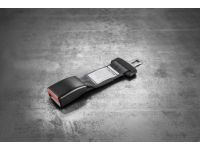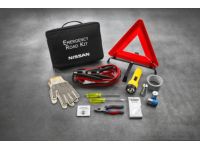- Live Chat
- 1-888-726-6993

Why choose NissanPartsDeal
- Quality Parts
To keep your car running at peak performance, you need Nissan Sentra genuine parts from NissanPartsDeal.com. For years, we've been the leading online Nissan Sentra parts store. At NissanPartsDeal.com all the parts in our catalog are inspected and tested by our team of experts to ensure optimal fit and performance.
- Unbeatable Prices
What makes NissanPartsDeal.com the best choice for Nissan Sentra OEM parts? You get giant savings because our goal is to offer unbeatable prices. OEM parts are perfect for drivers who want the best products available but don't have the funds to splurge on expensive parts. Plus, Our products offer the same performance and reliability as their OEM counterparts at a fraction of their price.
- Fast Shipping
All the OEM Nissan Sentra parts you need for routine maintenance and repair can be found in our complete Nissan Sentra parts catalog. Having the best inventory available, your parts for Nissan Sentra will arrive fast anywhere in the nation. Plus, all Nissan Sentra auto parts purchases are risk-free as everything is expedited directly from dedicated authorized dealers and backed by the manufacturer's warranty, so you'll be back on the open road before you know it.
Popular Genuine Nissan Sentra Parts
- Body Electrical Parts View More >
- Engine Mechanical Parts View More >
- Axle & Suspension Parts View More >
- Engine Electrical Parts View More >
- Miscellaneous Parts View More >
- Body (Side & Rear) Parts View More >
- Body (Front, Roof & Floor) Parts View More >
- Fuel & Engine Control Parts View More >
- Power Train Parts View More >
- Exhaust & Cooling Parts View More >
- Steering Parts View More >
- Brake Parts View More >
Shop Genuine Nissan Sentra Parts with NissanPartsDeal.com
The Nissan Sentra, initially categorized as a subcompact car, has been in production by Nissan since 1982. It was reclassified as a compact car from 2000 onwards. The Sentra was originally an export version of Japan's Sunny model, but since 2013, it became the export version of the Sylphy. Interestingly, many South American countries still sell their versions of the Sunny as the Sentra. The model has evolved through eight generations. Its first generation, debuted in 1982, succeeded the Datsun 210 lineup and was lauded for its sporty, personalized interior design. Over the years, the Sentra offered a variety of inline four-cylinder engines, even introducing a turbocharged gasoline engine for the North American market. The fifth-generation Sentra, launched in North America in 1999, adopted a new design strategy to cater to local preferences. The sixth generation Sentra, launched in North America in 2006, followed the family design style of Maxima or Altima. The 2012 Sylphy version, later introduced in the U.S as the Sentra, featured a new 1.8-liter 16-valve inline four-cylinder DOHC engine. The eighth generation launched in 2019 replaced the 1.8L engine with a 2.0L version and ceased the manual transmission option in the U.S. This model came in three trims - S, SV, and SR. An e-Power version of the Sentra was introduced in China in September 2021.
The Nissan Sentra, a compact vehicle popular among families due to its spacious interior, requires careful attention to maintain safety and performance. First, knocking sounds or excessive vibrations from the engine can indicate issues affecting its performance, leading to stalling, rough running, starting problems, and a decrease in power, acceleration, and fuel economy. Overheating due to coolant leaks may also be a concern. These symptoms could suggest the need to replace parts like the engine mount, motor and transmission mount, engine control module, spark plug, drive belt, serpentine belt, or water pump gasket. Second, around 71,000 miles, some Sentra models may experience transmission failure, manifested as jerking, improper acceleration, or starting in the wrong gear. This could signal a need to replace the shift cable. Suspension issues are also common, with symptoms such as excessive vibrations, abnormal tire wear, and vehicle bottoming out indicating potential issues with the wheel bearing, steering knuckle, coil spring insulator, or shock and strut mount. In addition to these concerns, routine maintenance of certain parts is essential. The headlight, which improves visibility during nighttime or adverse weather, should be kept bright. The seat belt, which protects occupants during sudden movements, and the emblem, which represents your Sentra's identity, should also be regularly maintained.
Choosing OEM parts is the best decision for guaranteeing superior quality and perfect performance. These components undergo stringent quality checks and are carefully constructed to comply with Nissan's factory specifications, ensuring a smooth installation process. Our online store, NissanPartsDeal.com, is your go-to destination for OEM Nissan Sentra parts, such as Seat & Seat Belt, Body (Back Door & Rear Body) at unbeatable prices. We offer an extensive selection of genuine Nissan Sentra parts, each backed by the manufacturer's warranty. Not only do we assure hassle-free returns if you adhere to our policies, but we also guarantee swift delivery.
Nissan Sentra Parts Questions & Answers
- Q: How is the expansion valve serviced on Nissan Sentra?A: On 2012 models, the expansion valve is serviced with the evaporator. First, have the refrigerant discharged at a dealer service department or an automotive air conditioning repair facility. Then, move aside the lower dash insulation to access the expansion valve pipe. On 2.5L engines, remove the cowl extension cover. Next, remove the refrigerant line-to-expansion valve bolts and disconnect the refrigerant lines. After that, remove the expansion valve mounting bolts and remove the expansion valve. Installation is the reverse of removal. Tighten the expansion valve bolts to the torque. Do not use old O-rings for the refrigerant lines; replace them with new ones and apply compressor oil to them before installation. Finally, have the system evacuated, charged and leak tested by the shop that discharged it.
- Q: How to remove and install the blower motor in a Nissan Sentra?A: Disconnect the battery's negative terminal. Remove the instrument panel top cover. For 2010 and earlier models, remove the lower panel cover, front floor duct, and Body Control Module (BCM). Disconnect the BCM's electrical connector and handle it carefully. Disconnect the blower motor's electrical connector, remove its mounting screw, and rotate it counterclockwise to remove. Installation is the reverse of removal. Reconnect the battery and perform re-learn procedures.
- Q: How to remove and install a radiator and coolant reservoir on Nissan Sentra?A: You can remove the cooling fan assembly and radiator mount bolts, then lift out the radiator from the vehicle. Inspect and clean the radiator before reinstalling. Disconnect the overflow hose, remove the engine mount torque strut and coolant reservoir. Reconnect the battery, allow the engine to get to normal temperature, and recheck coolant level.






























































